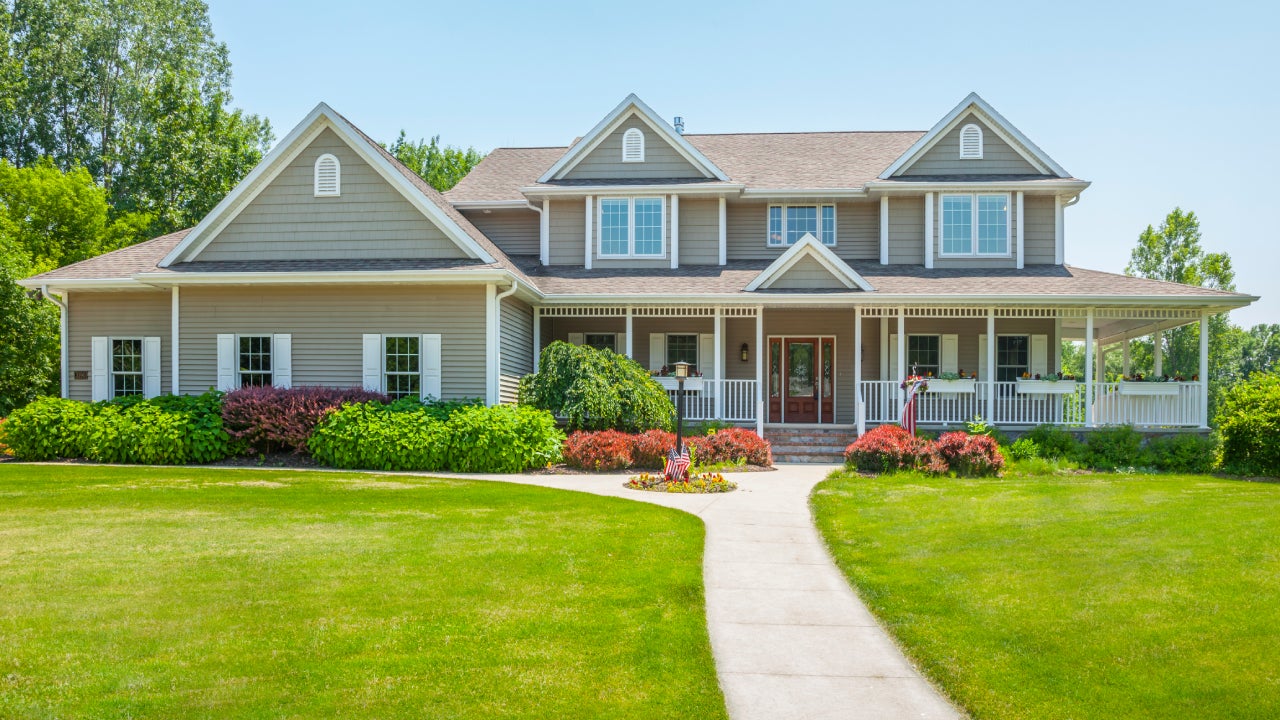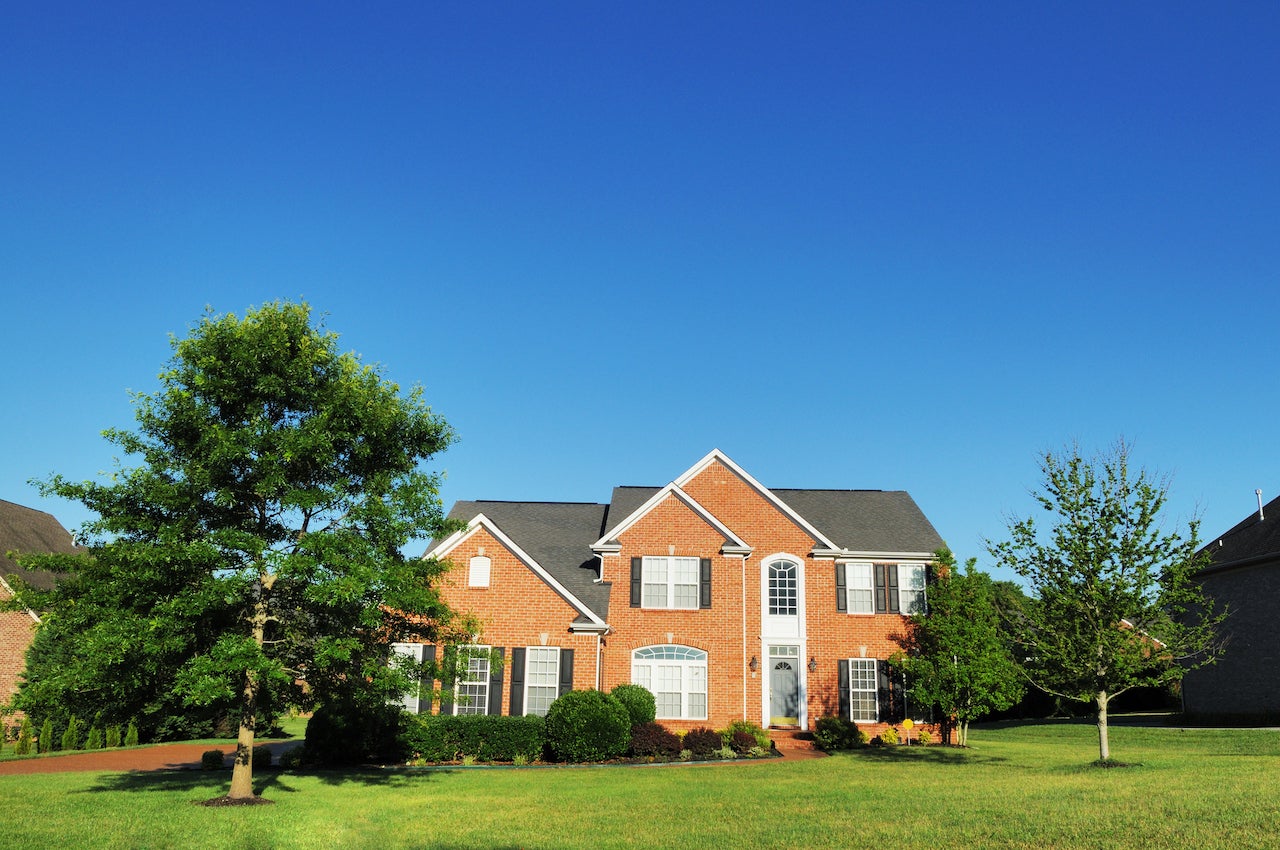How much should I spend on a home?

As you begin home shopping, it’s important to assess just how much you can afford to spend. This is especially critical at a time when the market is dominated by steep home values and equally steep mortgage interest rates. The median existing-home sale price as of August 2023 was a record-high $407,100, according to the National Association of Realtors. And the average rate for a 30-year mortgage is equally daunting, having soared close to 8 percent as of October 2023 — as high as it’s been in more than 20 years.
Of course, home values and interest rates are just two considerations to bear in mind when calculating how much home you can afford. There are many other expenses associated with homeownership that impact your ongoing costs. And the amount you can spend on a home versus the amount you should spend may be two entirely different figures. Here’s what to consider when you find yourself wondering, “How much should I spend on a home?”
Determining how much you can spend
Chances are, it will make more sense to spend less than your maximum possible budget. “Prospective homebuyers should understand that just because a bank approves a certain loan amount doesn’t mean they should use the full amount,” says Taylor Kovar, CFP, founder and CEO of Kovar Wealth Management in Lufkin, Texas. “It’s important to consider other financial goals, monthly expenses and potential emergencies, and to understand what it means to be ‘house poor.’ A home is a long-term commitment, and ensuring you have financial flexibility is crucial.”
A number of variables play a role in how much house you can afford as a prospective buyer. Here are some big ones to consider:
- Location: The area you’re shopping in plays a significant role in spending calculations. While the median home price nationally is above $400,000, prices vary significantly across the country, and there are many more affordable housing markets where prices are well below that national price-tag. Consider your desired area’s overall cost of living, as well — when daily necessities like food and transportation cost more, you’ll have less money available for monthly mortgage payments.
- Income: The amount of money you have coming in each month, and how stable that income is, is another primary consideration. There is no one income required to purchase a home, but you will need to be able to afford a down payment, closing costs and monthly mortgage payments, while also keeping up with your other debt payments.
- Savings: Having healthy cash reserves saved up is an important part of being prepared for the financial responsibilities of homeownership. The more you have set aside, the better you’ll be able to handle any unexpected emergencies whlie continuing to make your mortgage payments. “Cash reserves should be anywhere from two months of your monthly mortgage payments up to six months of your total monthly expenditures to cover emergencies or repairs,” says Jay Garvens, business development manager for Churchill Mortgage.
-
Credit: Your credit score has a significant impact on the mortgage interest rate a lender will offer you. Applicants with higher credit scores are likely to be offered the most competitive rates — the higher the better when it comes to keeping your mortgage interest rate down and making your monthly mortgage payments more affordable. If your score is on the low side, consider taking some time to work on raising it before seeking a mortgage.
Calculating DTI
Your debt-to-income ratio, or DTI, is another important factor when determining how much to spend on a home. This figure, which measures all of your monthly debt against your total monthly income, helps lenders determine how much they’re willing to loan you. The higher your DTI, the more concern lenders are likely to have about your ability to repay a loan, which increases their risk.
“Your debt-to-income ratio is a metric most mortgage lenders use to help determine how much someone can borrow to purchase a home without stretching their budget too far,” says Ron Goforth, senior vice president and director of product development at PNC Bank.
To calculate your DTI, add up all of your monthly debts and divide the sum by your monthly income.
While DTI limits may vary by lender and even by loan program, many experts recommend adhering to the 28/36 rule. This rule serves as an important baseline for home affordability and states that borrowers should spend no more than 28 percent of their gross monthly income on housing expenses, while your total debt expenses, including your mortgage, should be limited to 36 percent of your income.
As an example, let’s say you earn $100,000 per year, which breaks down to $8,333 per month. Since 28 percent of $8,333 comes to $2,333, your housing costs should not exceed $2,333 per month, and your total debt costs should not exceed 36 percent of that amount, or $3,000.
Estimating your future house payment
What your monthly payment will be depends heavily on the cost of the house, of course, but also on the amount of your down payment and your mortgage interest rate. The more you’re able to pay upfront in the form of a down payment, the less you’ll have to borrow — and the lower your rate, the less you’ll pay in interest.
Bankrate’s mortgage calculator can help you estimate what your monthly payment will be. For example, let’s say you’re looking to buy a house that costs $400,000. If you put down 20 percent, or $80,000, with a 30-year mortgage at 7.5 percent interest, your monthly principal and interest payments will come to $2,237. If you put down 20 percent with a lower 6.5 percent interest rate, it would decrease to $2,022. If you put down only 10 percent at 7.5 percent, that amount increases to $2,517 — plus the cost of private mortgage insurance, which is typcially required when the down payment amount is lower than 20 percent. In any scenario, you’d have to also add in the cost of homeowners insurance premiums and property taxes, which vary widely by location.
Cost of homeownership
You’ll also need to consider the ongoing costs of homeownership once you actually own the property. Regular upkeep can cost more than you think, especially on larger homes, so cash reserves are crucial. And if the home you buy is located in a community that’s managed by a homeowner’s association, then HOA dues will also be part of your costs of homeownership. These costs vary widely based on the HOA and what kind of services or amenities are provided.
“It’s important for homebuyers to give themselves some financial cushion,” says Goforth. “In addition to your mortgage payment, there are other costs, like home repairs and maintenance. Additionally, homebuyers should keep in mind that their financial situation may change throughout the course of their mortgage term.”
Next steps
Before you start home shopping, crunch the numbers on your finances to pinpoint how much you can comfortably afford to spend. It’s also smart to get preapproved for a mortgage, which will give you a good idea of how much a lender will be willing to loan you. Once you’ve got your budget squared away, it’s time to find a real estate agent. A local agent with expertise in the region you’re searching can be an invaluable partner, helping to identify listings that meet your needs and negotiating the best deal possible.
FAQs
-
The 28/36 rule, a commonly used financial guideline, states that you should spend no more than 28 percent of your gross monthly income on housing costs. Be sure to factor a down payment and closing costs into your budget too.
-
Figure out how much you can afford to spend by applying the 28/36 rule: Your annual income of $100,000 breaks down to gross monthly pay of about $8,333. So take 28 percent of that to determine the maximum amount you should spend on housing costs each month: $2,333. Just make sure your total debt spending, including not just housing but also credit cards, car payments, etc., does not exceed 36 percent.
-
The ongoing costs of property maintenance and upkeep can be more than expected. Some common things you don’t want to forget in your budget include property taxes, HOA dues, homeowners insurance premiums and lawn care. It’s also smart to keep a rainy-day fund for unexpected or emergency repairs.
You may also like

What income do I need to afford an $800K house?

What income do I need to afford a $550K house?




